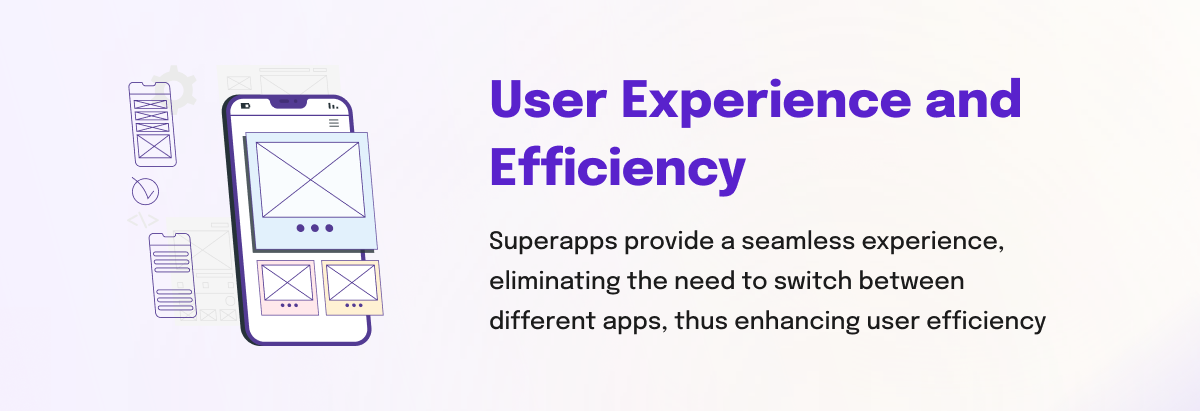Could Superapps Replace the Multitude of Apps in Our Digital Lives?
The concept of 'Superapps' has been gaining traction in the tech industry, promising to revolutionize the way we interact with our digital world. Unlike traditional mobile applications that serve a singular purpose, superapps combine multiple functions and services into one integrated platform. This article explores how superapps could potentially replace the multitude of apps in our digital lives, focusing on advanced insights, recent statistics, and future trends.

Understanding Superapps
A superapp is more than just a mobile application; it's a platform that integrates various services like messaging, payments, e-commerce, and more. This concept, pioneered by apps like WeChat in China, offers a comprehensive digital ecosystem within a single app. As per a report by App Annie, the average smartphone user has over 80 apps installed but regularly uses only about 9 daily. This gap highlights the potential for superapps to consolidate digital experiences.

Superapps vs. Traditional Apps
Efficiency and User Experience:
Superapps offer a seamless, integrated experience, eliminating the need to switch between different apps for various services. This integration enhances user efficiency and experience, a key factor driving their adoption.

Data Integration and Personalization:
By housing multiple services, superapps can leverage data integration to offer personalized experiences. This aspect is crucial in an era where personalized digital interactions are becoming the norm.
Case Studies of Superapp Implementation
Asian Markets: WeChat and Grab
In Asia, superapps like WeChat and Grab have already demonstrated their potential. WeChat started as a messaging app and evolved into a platform offering payment services, shopping, and even government services. Similarly, Grab transitioned from a ride-hailing service to a multifaceted platform providing food delivery, digital payments, and financial services.
Western Markets: Emerging Trends
While the concept is still nascent in Western markets, companies like Uber and PayPal are expanding their service offerings, indicating a shift towards the superapp model.
Statistical Insights
- Market Penetration: Research from eMarketer shows that in Asia-Pacific regions, more than 50% of mobile users are active on superapps, compared to less than 20% in North America and Europe.
- User Engagement: A study by McKinsey found that superapps can increase user engagement by up to 4 times compared to traditional single-purpose apps.
Future Insights: The Superapp Landscape
1. Integration with Emerging Technologies:
Future superapps are likely to integrate with emerging technologies like AI, blockchain, and IoT. These integrations can enhance functionalities like predictive analytics, secure transactions, and smarter automation.
2. Expansion into New Services:
Superapps are expected to delve into newer domains such as telehealth, education, and government services, offering more comprehensive digital solutions.
3. Data Privacy and Security Challenges:
As superapps collect vast amounts of user data, addressing privacy and security concerns will be crucial. Innovative solutions in data encryption and user consent management will be key focus areas.
4. Regulatory Landscape:
The regulatory environment will play a significant role in shaping the superapp ecosystem. Policymakers will need to balance innovation encouragement with data protection and fair competition.
Challenges and Considerations
Monetization Strategies:
Superapps face unique challenges in monetizing their diverse service offerings. Developing sustainable business models while keeping the user experience uncluttered is critical.
Cultural and Regional Differences:
The success of superapps can vary significantly across different cultures and regions. Customization to local preferences and behaviors is essential for global expansion.
Conclusion
Superapps represent a paradigm shift in our digital interactions, offering an integrated and efficient alternative to the current multitude of single-purpose apps. While they have shown tremendous potential in Asian markets, their adoption in Western regions is still evolving. The integration with emerging technologies, expansion into new services, and the navigation of privacy and regulatory challenges will shape the future of superapps. Businesses and developers embracing this model will not only streamline user experiences but also open new avenues for innovation and growth in the digital ecosystem.
We can help!
Why Scrum Fits Like A Glove
#Customapplicationdevelopment
Mvps - A Silver Bullet In Software Development
#Customapplicationdevelopment



